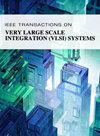基于gem操作的可扩展FPGA架构与自适应内存利用
IF 3.1
2区 工程技术
Q2 COMPUTER SCIENCE, HARDWARE & ARCHITECTURE
IEEE Transactions on Very Large Scale Integration (VLSI) Systems
Pub Date : 2025-06-03
DOI:10.1109/TVLSI.2025.3571677
引用次数: 0
摘要
深度神经网络(DNN)推理越来越依赖于专门的硬件来提高计算效率。这项工作介绍了一种基于现场可编程门阵列(FPGA)的动态可配置加速器,具有收缩阵列(SAs),高带宽存储器(HBM)和ultraram。我们提出了两种处理单元(PU)配置,使用相同的接口和外设块具有不同的计算能力。通过实例化多个pu并采用启发式权重转移调度,该体系结构比先前的工作实现了显着的吞吐量效率。此外,我们概述了如何扩展该架构以模拟内存中模拟计算(AIMC)设备,以帮助下一代异构AIMC芯片设计并研究设备级噪声行为。总体而言,本简介介绍了一个通用的DNN推理加速架构,适用于各种模型和未来的FPGA设计。本文章由计算机程序翻译,如有差异,请以英文原文为准。
A Scalable FPGA Architecture With Adaptive Memory Utilization for GEMM-Based Operations
Deep neural network (DNN) inference relies increasingly on specialized hardware for high computational efficiency. This work introduces a field-programmable gate array (FPGA)-based dynamically configurable accelerator featuring systolic arrays (SAs), high-bandwidth memory (HBM), and UltraRAMs. We present two processing unit (PU) configurations with different computing capabilities using the same interfaces and peripheral blocks. By instantiating multiple PUs and employing a heuristic weight transfer schedule, the architecture achieves notable throughput efficiency over prior works. Moreover, we outline how the architecture can be extended to emulate analog in-memory computing (AIMC) devices to aid next-generation heterogeneous AIMC chip designs and investigate device-level noise behavior. Overall, this brief presents a versatile DNN inference acceleration architecture adaptable to various models and future FPGA designs.
求助全文
通过发布文献求助,成功后即可免费获取论文全文。
去求助
来源期刊
CiteScore
6.40
自引率
7.10%
发文量
187
审稿时长
3.6 months
期刊介绍:
The IEEE Transactions on VLSI Systems is published as a monthly journal under the co-sponsorship of the IEEE Circuits and Systems Society, the IEEE Computer Society, and the IEEE Solid-State Circuits Society.
Design and realization of microelectronic systems using VLSI/ULSI technologies require close collaboration among scientists and engineers in the fields of systems architecture, logic and circuit design, chips and wafer fabrication, packaging, testing and systems applications. Generation of specifications, design and verification must be performed at all abstraction levels, including the system, register-transfer, logic, circuit, transistor and process levels.
To address this critical area through a common forum, the IEEE Transactions on VLSI Systems have been founded. The editorial board, consisting of international experts, invites original papers which emphasize and merit the novel systems integration aspects of microelectronic systems including interactions among systems design and partitioning, logic and memory design, digital and analog circuit design, layout synthesis, CAD tools, chips and wafer fabrication, testing and packaging, and systems level qualification. Thus, the coverage of these Transactions will focus on VLSI/ULSI microelectronic systems integration.

 求助内容:
求助内容: 应助结果提醒方式:
应助结果提醒方式:


